What is your birth month herb? Discover the symbolic meaning behind yours
Herbs offer symbolic wisdom, and play to the natural rhythms of the season

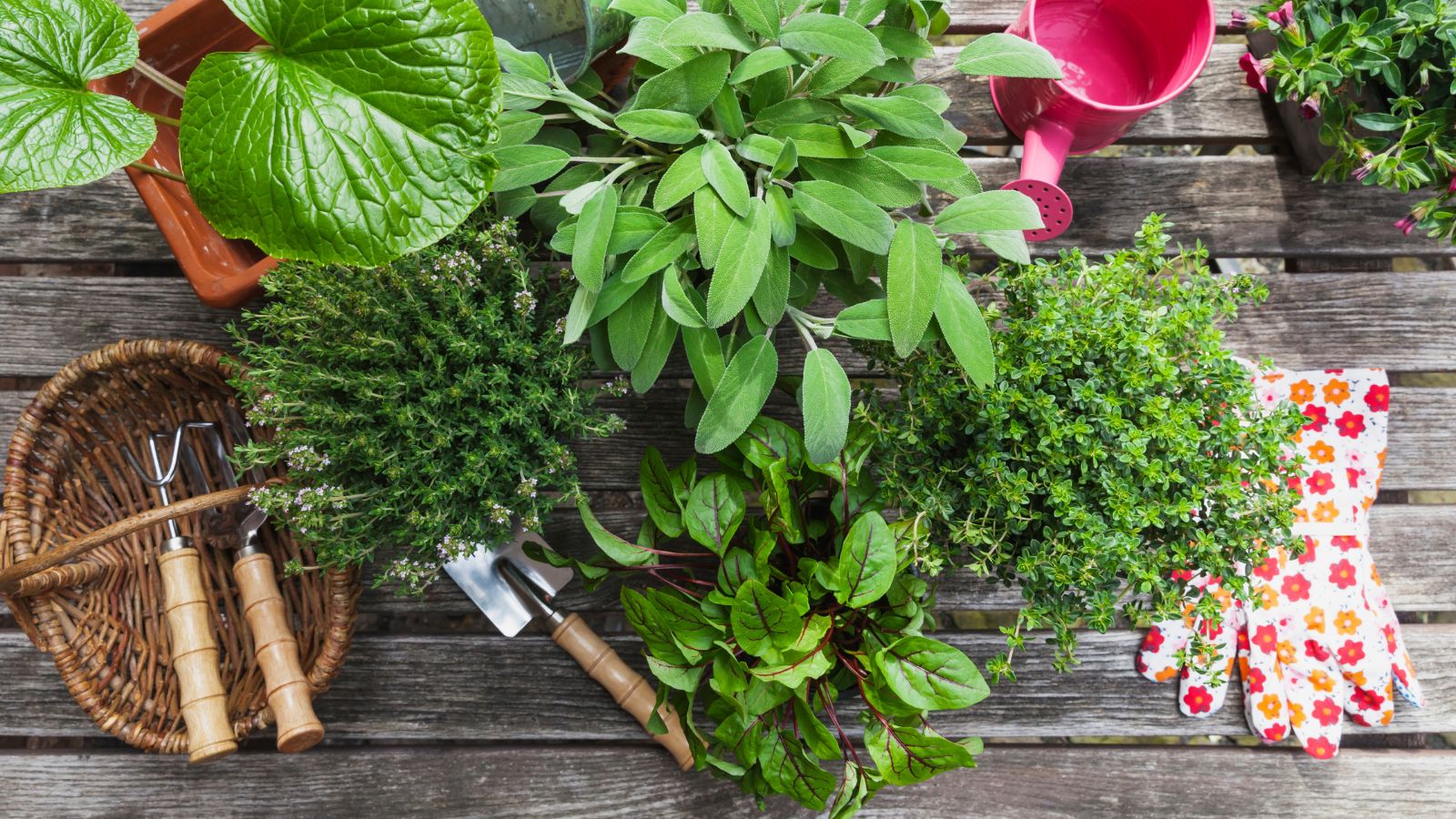
Birth herbs, just like their floral counterparts, can carry symbolic meaning and seasonal significance. Each month has a herb that captures something of its spirit – from the fresh energy of mint in April to the bold prosperity of basil in June – and offers plenty of home-growing potential, too.
Birth month herbs, like birth month flowers, have historically been used in folklore, as herbal medicines, and been given as gifts.
Inspired by the Farmers’ Almanac's guide to birth month herbs, we’re taking a closer look at the symbolism behind each herb. Whether you want a meaningful plant to gift or an addition to your indoor garden, these herbs offer both beauty and function. We spoke to gardening experts, too, to uncover tips for nurturing your birth herb – linking to our key herb-growing guides throughout.
January: Rosemary
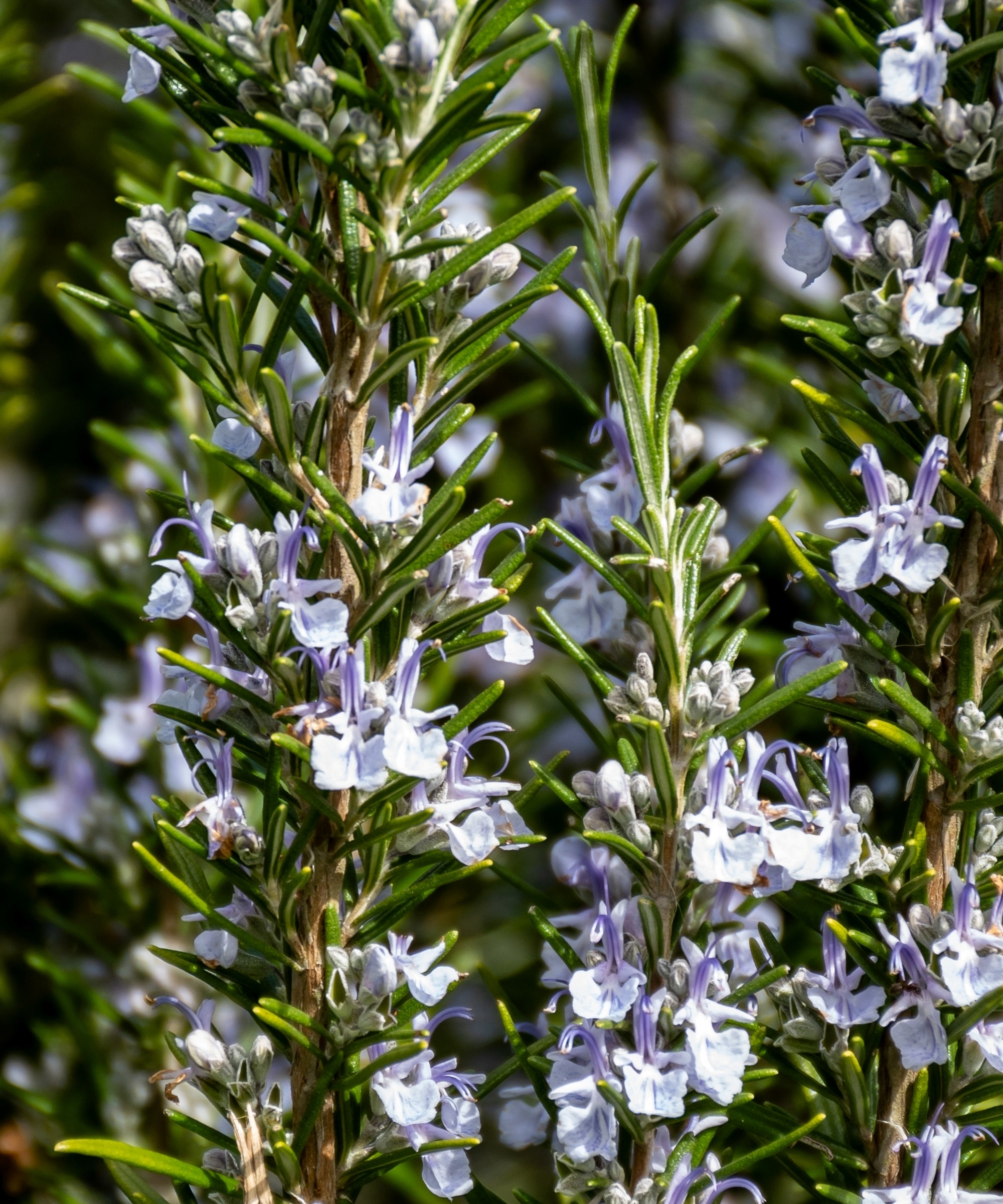
Rosemary is January's birth month herb. Often associated with memory, clarity, and renewal – perfect themes for the start of a new year – it invites people to look back with wisdom and step forward with clear intention.
As an evergreen herb, rosemary stays vibrant in colder months, representing endurance and strength through the winter, which aligns with January’s resilient, Capricorn energy.
Rosemary has been used in New Year’s cleansing rituals for setting intentions and during midwinter celebrations for centuries, when it is burned for purification and warding off negativity.
If following tradition or simply embracing the spirit of new beginnings you choose to plant some rosemary, advises Michael Clarke, landscape architect and founder of Yardwork: ‘When growing rosemary, be sure to choose a spot that gets plenty of sunlight – this herb thrives with at least six hours of direct light each day to stay healthy and strong. It also prefers sandy or gritty soil with excellent drainage, as rosemary is sensitive to overly wet roots.
Design expertise in your inbox – from inspiring decorating ideas and beautiful celebrity homes to practical gardening advice and shopping round-ups.
‘Water sparingly and aim for the base of the plant rather than overhead, especially in cooler weather, to help prevent mildew. After the blooming period, give it a light trim to keep its shape.’

Michael Clarke is the founder of Yardwork and Pulled, the online platforms for everything home and garden. He has a degree in landscape architecture and horticulture from the University of California Davis. He was previously the founder of a landscape development and maintenance company, where he provided complete landscape services to homeowners and commercial property owners.
February: Lavender

February is the month of Valentine’s Day, and lavender has long been linked to love, calm, and emotional healing – qualities that speak directly to the heart of the month. Lavender is known to foster relaxation, balance, and emotional healing, perfect for the serene qualities February often evokes.
Lavender pairs well with the intuitive and dreamy energy of Aquarius and Pisces, the two zodiac signs that rule over February.
If you are growing lavender, keep it thriving by planting it in a spot that receives six to eight hours of full sun each day. This sun-loving herb prefers well-drained, sandy soil and doesn't like to stay wet, so be sure to let the soil dry out between waterings.
Overwatering can lead to root rot, so when in doubt, go light. Lavender also does best in warm, dry conditions, so protect it from cold drafts and harsh winter weather if you’re growing it indoors or in cooler climates – to do this you can place your lavender near a sunny south-facing window or use a grow light (this highly rated one from Amazon is also one of the best looking) to supplement natural light if you are growing lavender indoors.
If you're keeping it outdoors in a cooler climate, consider planting it in a pot so you can bring it inside during the colder months. You can also add mulch or gravel around the base to help insulate the roots and improve drainage.
March: Chives

‘Chives symbolize new growth, renewal, vitality and is one of the first herbs to pop up in early spring,’ says Michael Clarke.
March brings the bold, fiery energy of Aries, and chives reflect that with their sharp flavor, bright presence, and resilient growth.
If you are growing chives, it's important to know that they thrive in March’s cool, shifting weather – responding quickly to longer days and warmer soil. Their fresh green shoots are a sure sign of spring, offering a mild onion flavor perfect for seasonal dishes.
'Chives seldom flower indoors, but a fringe benefit of growing them outdoors is their beautiful cluster of star-like edible flowers that bloom in shades of pink and white,' explains Susan Betz, garden communicator, specializing in herbs at Start Fresh Herbs.
However, outdoors, they will thrive when planted in a sunny spot with loose, fertile soil and kept evenly moist, especially early on as the roots settle in. A light mulch helps protect against late frosts.
Harvest regularly to encourage fresh growth and delay flowering, which can slow leaf production.

Susan is a garden communicator, lecturer, and conservationist with a focus on herbs and native plants. She is the author of two books: Neighboring with Nature: Native Herbs for Purpose and Pleasure and Herbal Houseplants: Grow Beautiful Herbs – Indoors!. In addition to her writing and public speaking, Susan is an active member of the National Gardening Bureau.
April: Mint
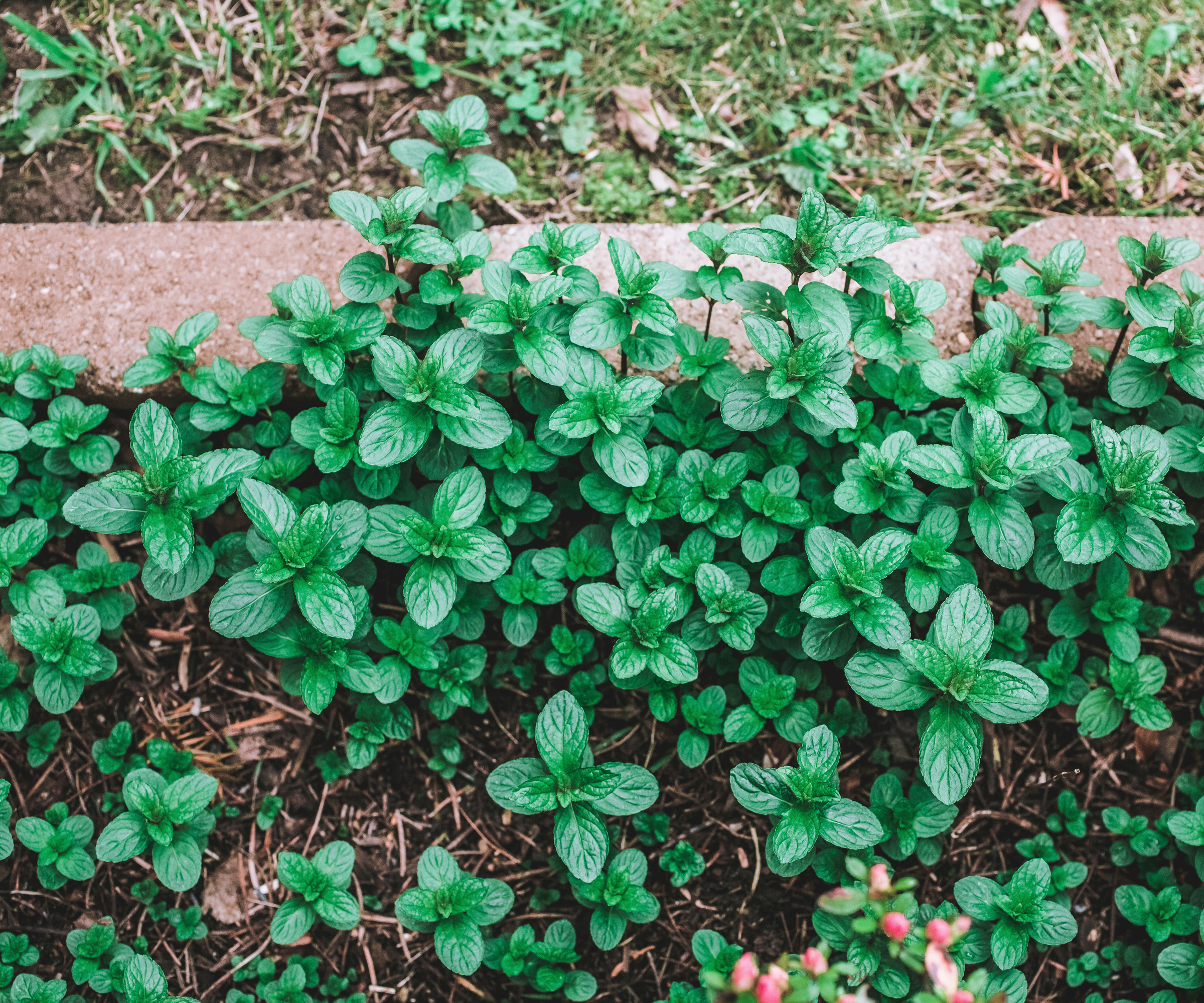
Mint, says Michael Clarke, ‘symbolizes energy, freshness, and protection. It begins sprouting in early spring and spreads vigorously in the garden.’
Mint has been long associated with rejuvenation, clarity and healing, and, as April shakes off the last traces of winter, mint mirrors that shift in the seasons, coming back to life, and helping to awaken the senses and energize the body and mind. 'At one time, a bundle of mint hanging near the entrance door was a host’s way to welcome guests into the home,' notes Susan Betz.
April is ruled by Aries (fire) and Taurus (earth), two signs that balance action and stability. Mint reflects both: it spreads rapidly (like Aries) but stays rooted and grounded in the soil (like Taurus).
You can grow mint outdoors; mint loves moist, well-drained soil and thrives in partial to full sun. It spreads quickly, so consider planting it in a container or confined bed to keep it from taking over. Keep the soil consistently damp but not soggy. You can grow mint indoors, too.
Regular harvesting encourages bushier growth – just pinch off the top leaves often. To keep it healthy, trim back any leggy stems and watch for pests like aphids.
May: Lemon Balm
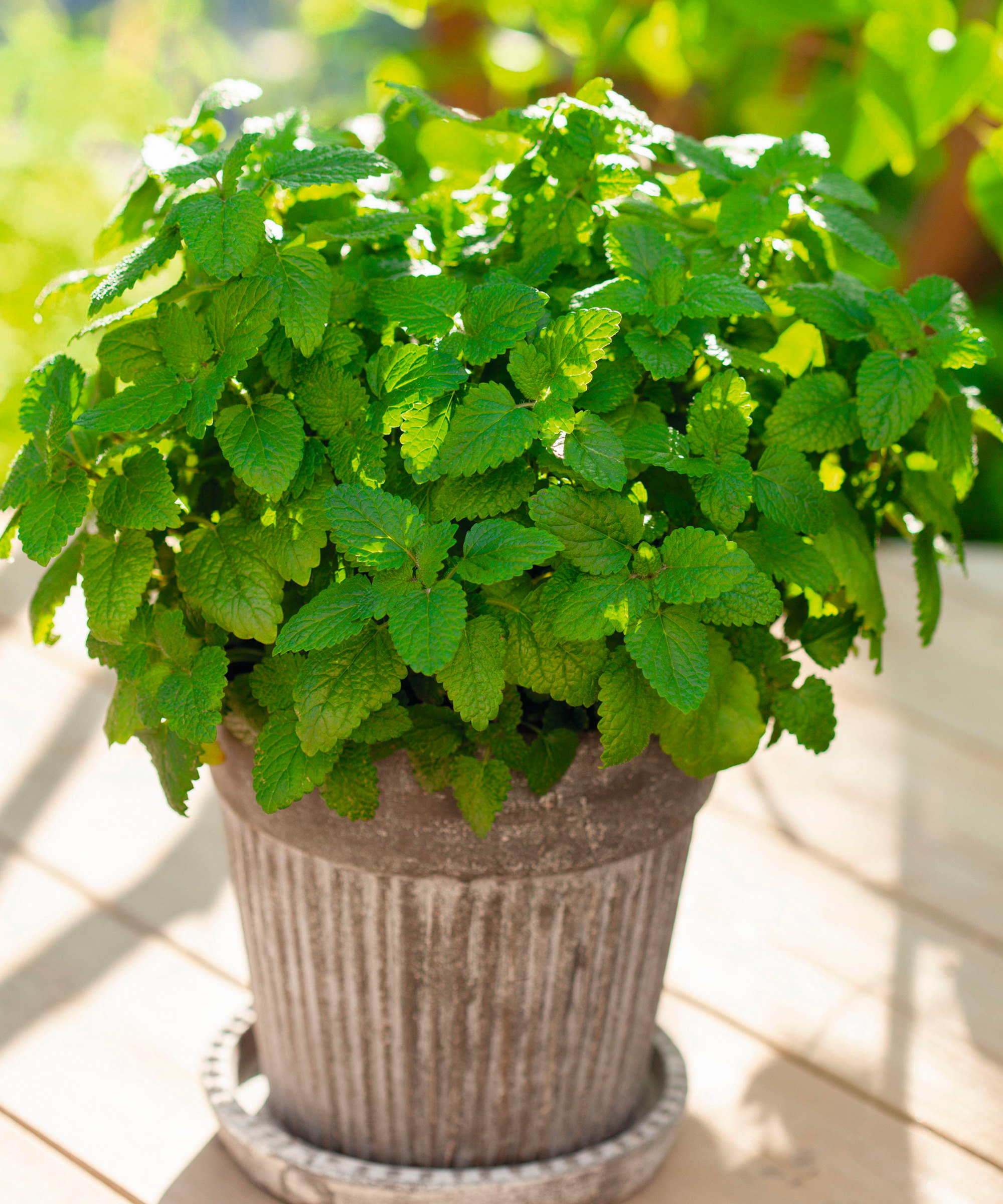
Lemon balm, according to Michael Clark, 'symbolizes joy, healing, and love. It comes to life in early spring with warmth and sunshine and can be used in calming teas, insect-repellent balms, and sleep aids. Its gentle medicinal properties also make it a favorite for spring teas, baths, and infusions.'
Susan Betz adds: 'A cousin of the kitchen garden mints, lemon balm has a rich cultural, medicinal, and culinary history of use. This herb’s medicinal qualities have earned it much respect through the ages. “Heart’s delight” and “elixir of life” are two of the descriptive names attributed to lemon balm’s calming and restorative effects on the mind, body, and spirit. Lemon balm makes a delightfully soothing warm tea, and aromatherapists recommend lemon balm to counter depression, anxiety, and insomnia.'
May is ruled by Taurus (earthy, sensual) and Gemini (curious, airy), and lemon balm speaks to both. It has the grounding, nurturing quality Taurus loves, and its ability to lift mental fog and encourage clarity resonates with Gemini’s quick, airy mind.
Lemon balm bursts into life in May, thriving as the days warm. It spreads quickly via shallow runners, making it a lush, fragrant filler for garden beds.
Plant in moist, well-drained soil, and give it partial sun to keep the leaves tender during hot spells. Since it can be invasive, it’s best grown in containers or raised garden beds.
Prune regularly to maintain shape and encourage fresh, flavorful growth.
June: Basil
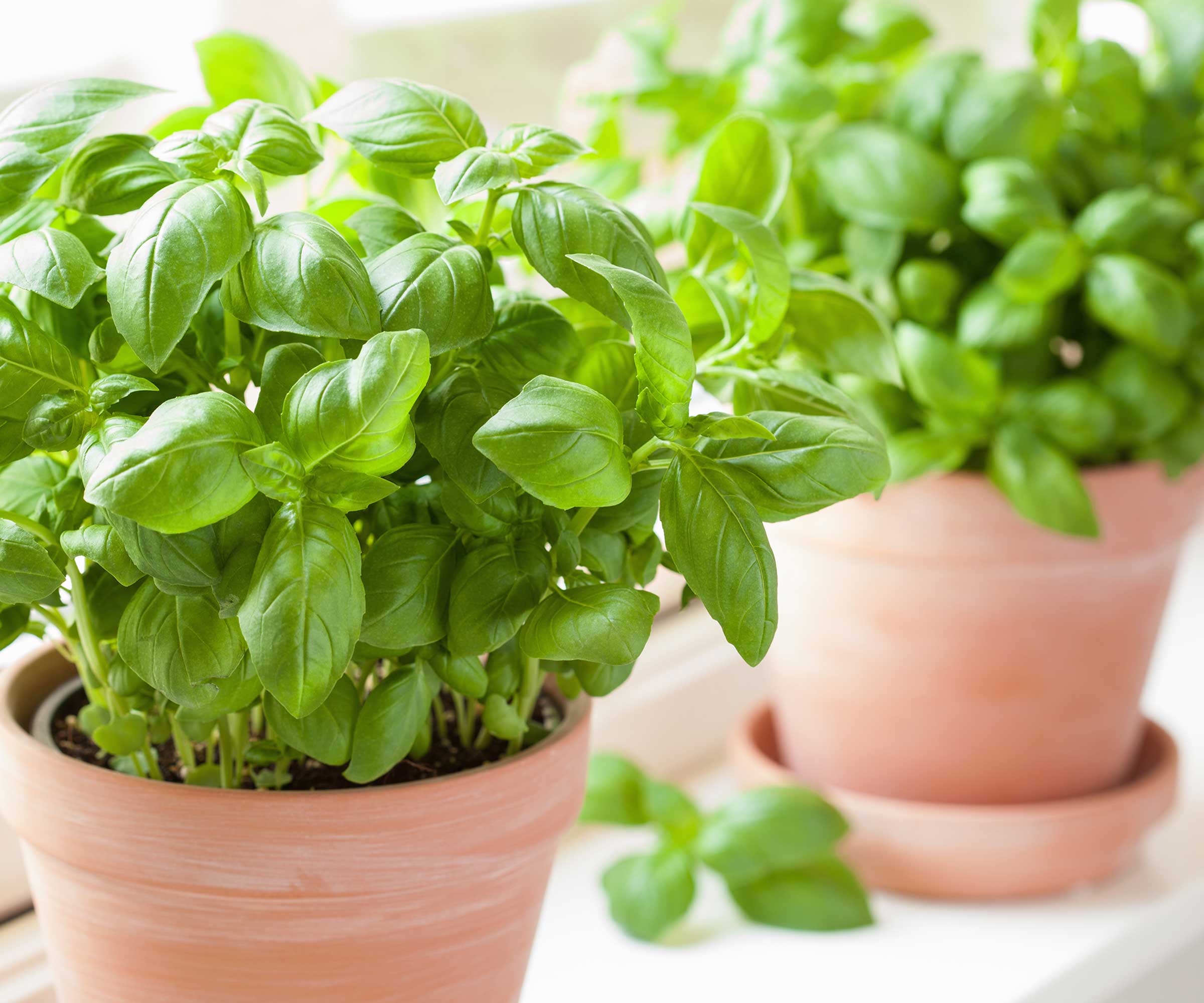
In folklore, basil was used in rituals to attract positivity and prosperity. It has long been associated with love, abundance, protection, and good fortune – fitting symbols for a month traditionally tied to weddings, fertility, and new beginnings.
June is ruled by Gemini and Cancer – two signs that balance curiosity and emotion. Basil connects to Gemini with its bright, uplifting scent and versatile nature, and to Cancer with its comforting, homey qualities, especially when used in nourishing food.
Growing basil? It loves warmth and full sun, thriving as summer begins. Its sweet, spicy scent brings gardens to life.
Plant in rich, well-drained soil, and if starting from seed, wait until night temps stay above 50°F. Water deeply but allow the soil to dry slightly between waterings to prevent root rot.
Pinch back top leaves regularly to promote bushy growth and delay flowering – once it blooms, the leaves lose their flavor. Frequent harvesting and pruning basil keeps the plant productive and the taste vibrant.
July: Oregano
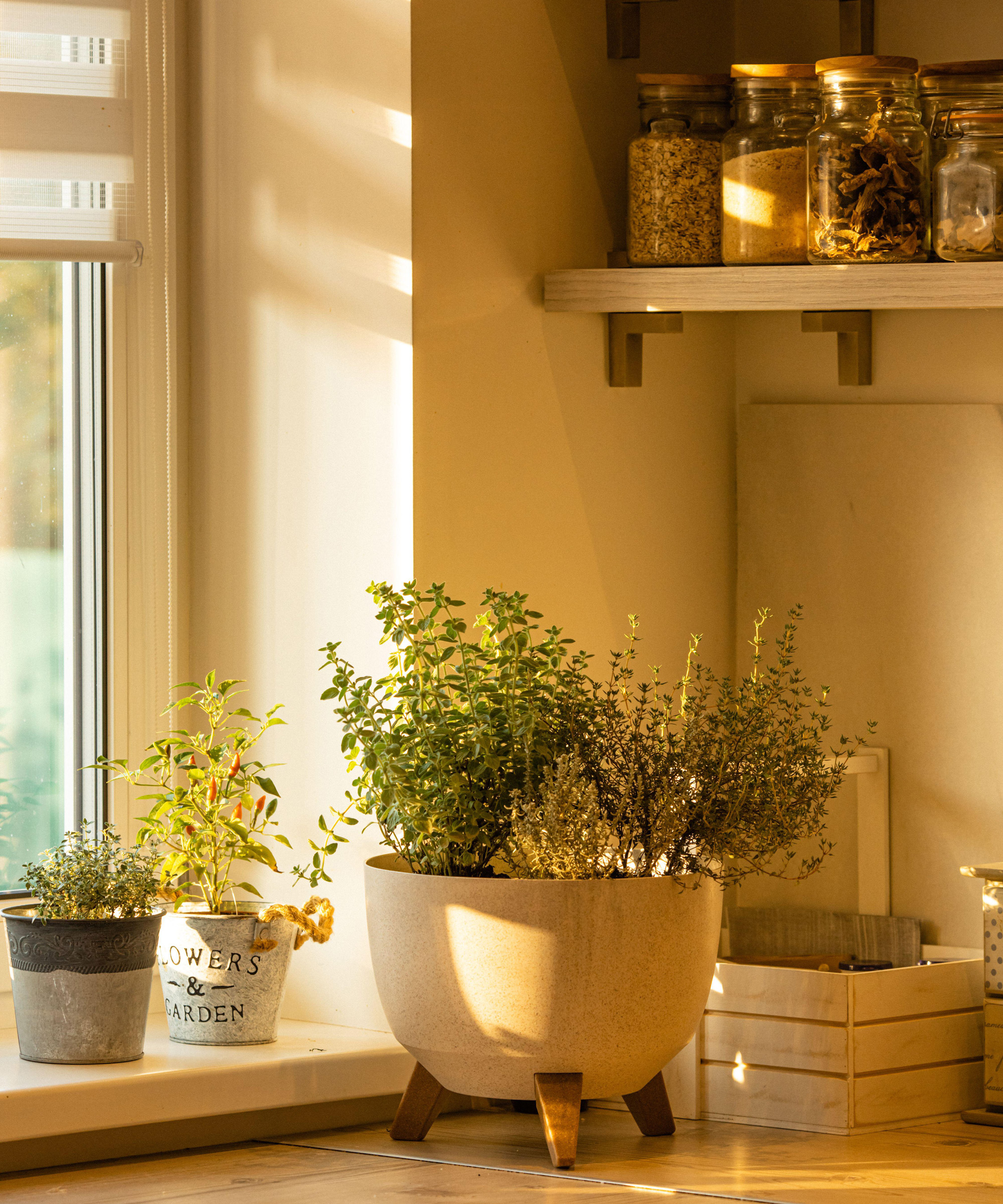
Historically, oregano has symbolized joy, vitality, and protection – perfect traits for a birth month that's all about fullness of life. Oregano reflects July’s spirit of warmth, celebration, and strength – a resilient herb for a vibrant, sun-filled month. In ancient Greece, oregano was gifted as a blessing of happiness and used in wedding garlands, symbolizing love and enduring strength.
July is ruled by Cancer (nurturing and emotional) and Leo (bold and fiery). Oregano bridges the two: it's earthy and comforting in flavor (Cancer), yet bold and aromatic in presence (Leo). It supports the heart and digestion, offering both warmth and balance.
Oregano thrives in dry heat and full sun, making July the perfect month for this bold, aromatic herb. Its flavor intensifies under stress, so lean, well-drained soil works best – avoid rich soil, which can dilute its taste.
Italian oregano, from True Leaf Market, is known for having mild pepper and a pungent scent similar to mint, making this variety one of the most popular herbs in cooking.
Let the top few inches of soil dry out between waterings to prevent root rot. Harvest generously as it begins to flower, and trim it back by a third after blooming to encourage dense, flavorful regrowth.
August: Dill
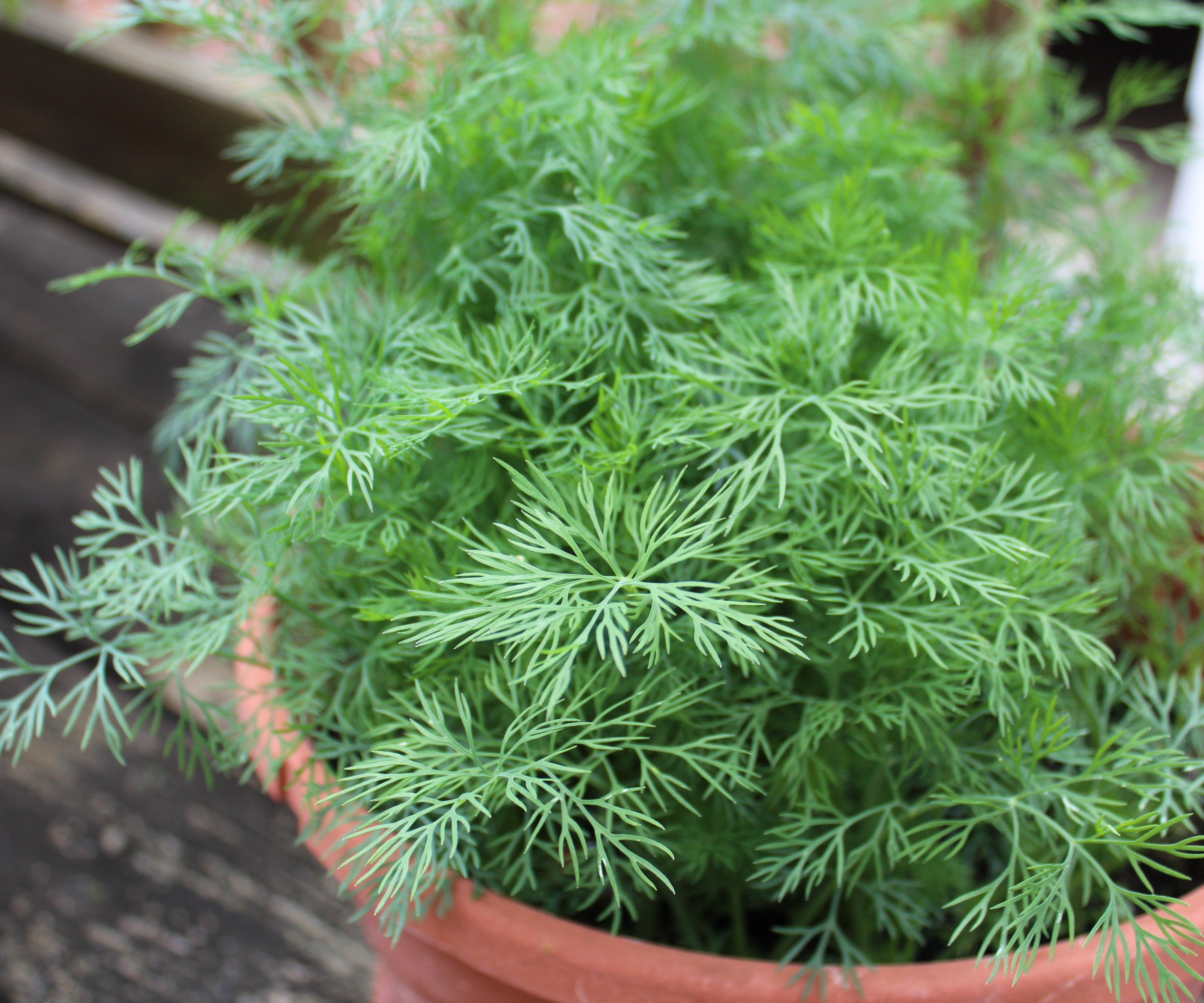
'Historically, dill has symbolized clarity, protection, and luck, used for friendships and ceremonies of jubilation,' says Laurelynn and Byron Martin, co-owners of Logee’s Plants for Home and Garden. This herb symbolises. August's sun-drenched energy and harvest abundance.
Ancient Egyptians used dill for medicinal purposes, while the Greeks and Romans believed it brought courage and good fortune. In medieval Europe, it was tucked into charms and placed in doorways to ward off negative energy and attract prosperity.
August is ruled by Leo (radiant and confident) and Virgo (practical and healing). Dill reflects this astrological transition. Its bold, unmistakable flavor is pure Leo – bright, confident, unmistakable. Yet its deeply medicinal nature, especially for digestion and calming the mind, channels Virgo’s love of service and wellbeing.
'Dill is an annual that is relatively cold-hardy. Keep above freezing when grown outside in a pot,' explains Laurelynn and Byron. 'Dill grows rapidly from seed when planted in rich, fertile soil. The feathery foliage does flower in late summer. They like to have moisture, so keep them well-watered. They are not heavy feeders but will need feed if grown in poor soil,'
It prefers well-drained, slightly acidic soil and doesn’t respond well to transplanting, so sow it where you want it to grow. Allow a few plants to flower and go to seed to support pollinators and self-sowing for next season.
There are many varieties of dill - we recommend these organic dill seeds from Burpee for the most amazing flavor when used in cooking.
Harvest the leaves early in the morning when oils are strongest. For best flavor, snip sprigs just before the plant flowers.

Laurelynn G. Martin and Byron E. Martin are the authors of Edible Houseplants and co-owners of Logee’s Plants for Home and Garden. They are nationally recognized experts in growing tropical container plants.
September: Thyme
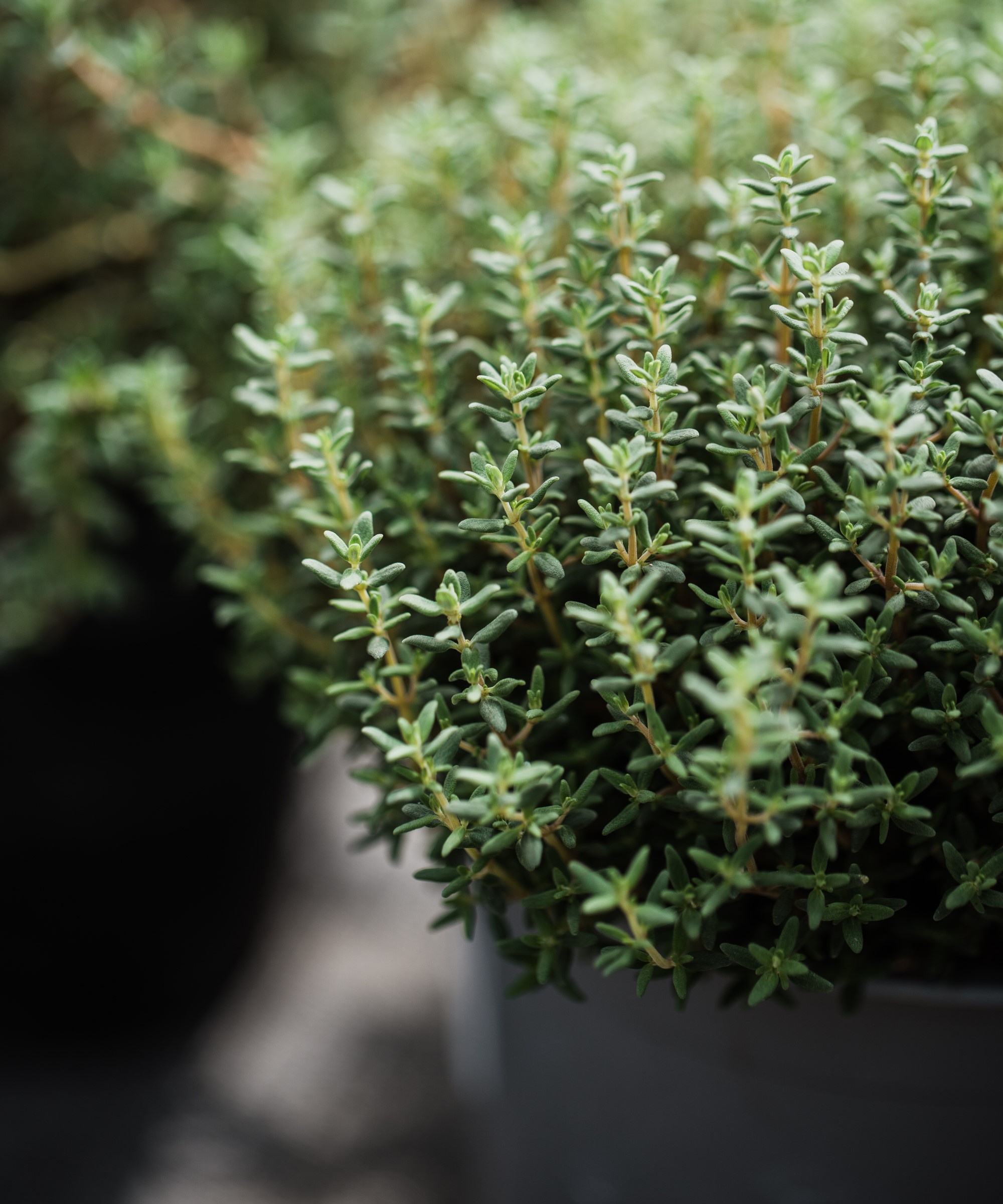
Thyme symbolizes courage, transition, and peace. A hardy perennial often harvested in the fall, it is a good roasting herb, used in soothing syrups, or as a cold remedy.
Growing thyme is easy: its low-growing habit makes it useful along edges, and its ability to withstand drought and poor soil gives it a strong foothold in harsh summer conditions.
Choose a planting spot that offers full sun throughout the day, and make sure the soil drains quickly as standing moisture will cause the roots to rot.
Avoid rich composts, which soften its structure and weaken flavor. Once the blooming period ends, give thyme a light pruning to clean up the plant and direct energy toward fresh leaf production as temperatures begin to ease.
October: Bay Laurel
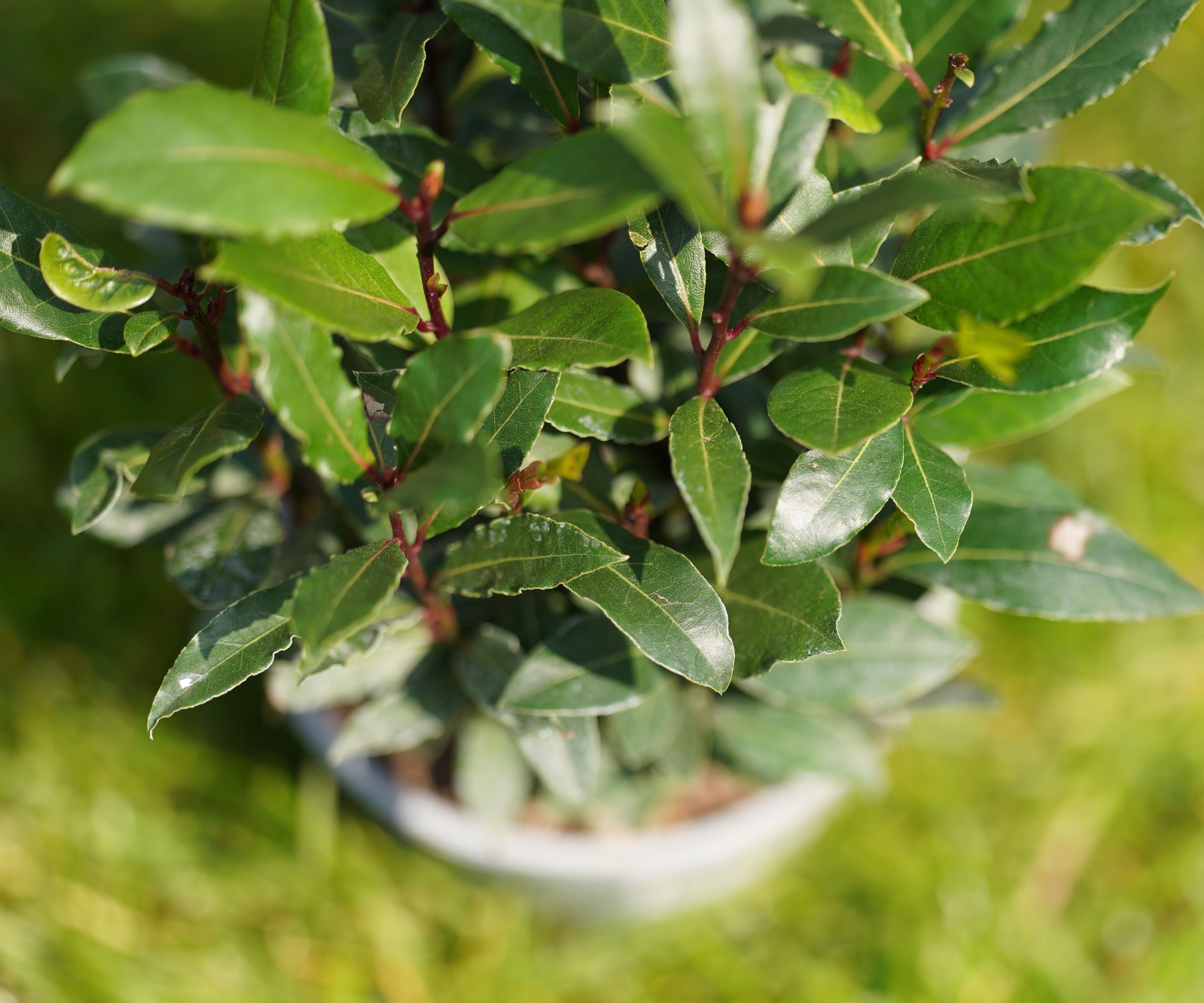
Bay, says Michael Clarke, 'symbolizes victory, protection, and inner strength.' An evergreen shrub, often pruned in fall, bay leaves flavor soups and stews and can be used to create ornamental wreaths.
Bay is valued for both culinary and ornamental purposes. 'If you like to cook, and considering the price of bay leaves, having your own bay tree is an excellent investment,' recommends Susan Betz.
'Adaptable and easygoing, bay tolerates indoor conditions better than most herbs and is a very striking summer patio plant.
'Bay leaves are used to repel fleas, roaches, lice, and will prevent moths and bugs when placed in canisters of flour or grains.'
November: Parsley
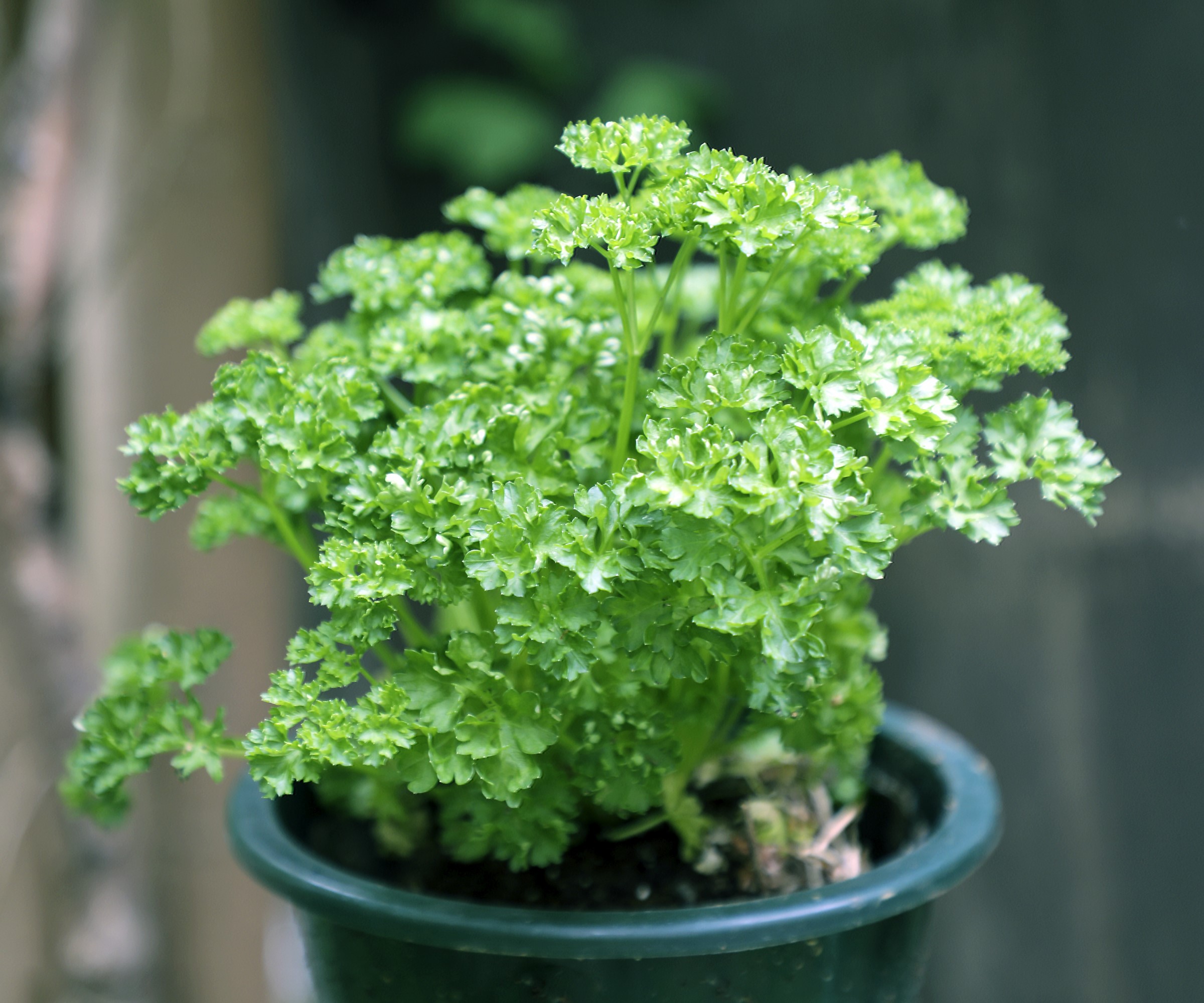
Parsley symbolizes renewal, gratitude, and clarity. It is a cold-hardy biennial, perfect for cooler months and can be used to garnish just about anything. Additionally it can be used in detox teas or chimichurri.
Growing parsley successfully means finding fertile, loamy soil; it also appreciates consistent moisture, especially while establishing. If growing from seed, start early since germination is slow.
Once plants are active, harvest outer stems first and leave the inner crown untouched to allow for continuous production.
Italian flat-leaf parsley, from True Leaf Market, is super easy to grow from seed and is a versatile culinary herb.
Laurelynn and Byron Martin add: 'Parsley is tolerant to cold temperatures and can winter over in mild areas, making it a great container plant which can be brought inside in the winter. It is a biennial and will flower in its second year.'
December: Sage
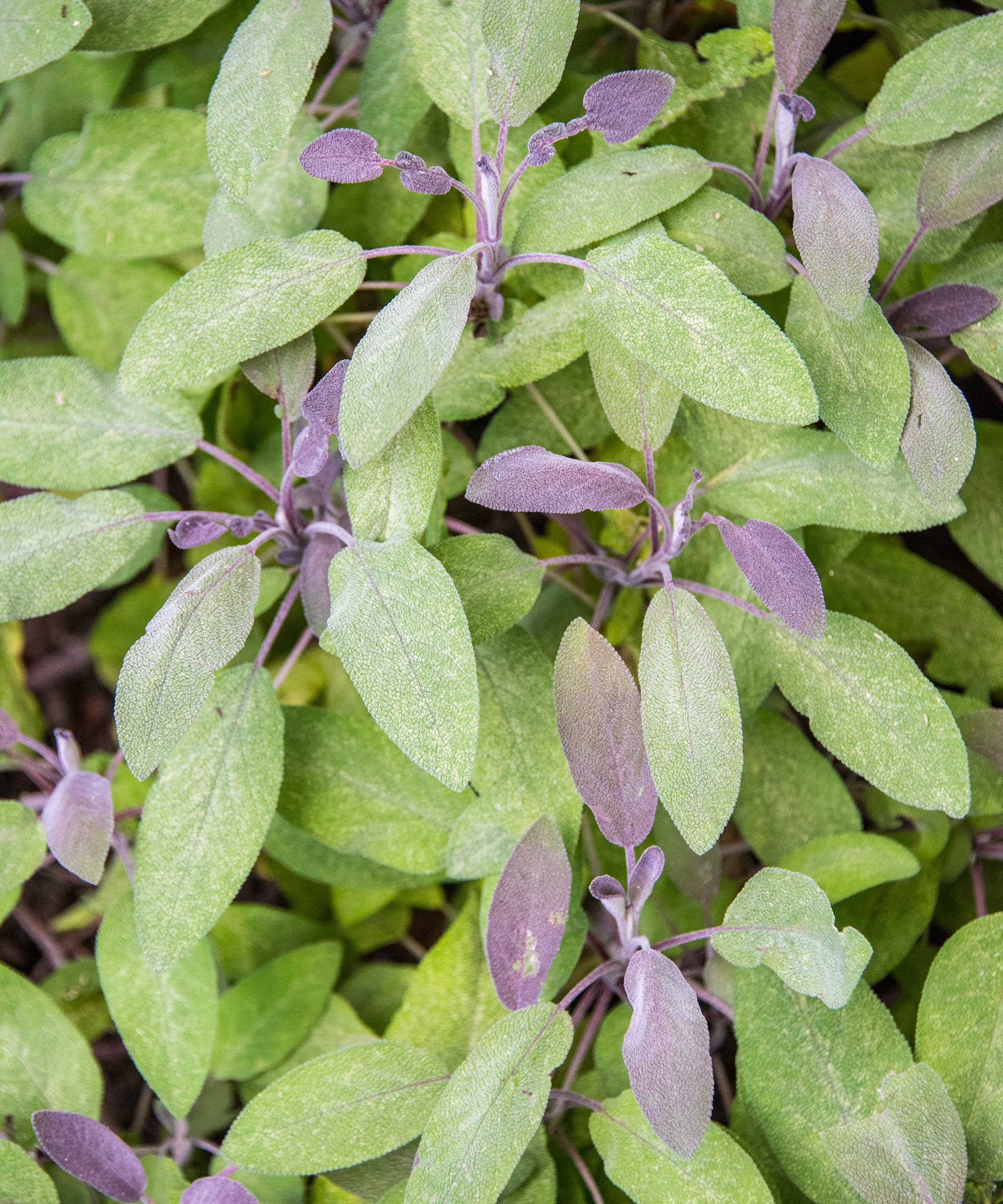
Sage symbolizes wisdom, purification, protection, and longevity – perfect for closing the year, reflecting, and entering a new cycle with clarity.
Sage has long been used in cleansing rituals, especially around the winter solstice and New Year, to clear out old energy and make space for renewal.
Plus, sage warms the body and aids digestion, which fits the season of heavy meals and colder weather. Additionally, Susan Betz adds: 'In French, sage means wise and regular use of sage tea was supposed to restore the memory as well as banish melancholy and depression.'
Purple sage plants, available from Burpee, are the most effective medicinal sage varieties.
Growing sage that's flavorful means finding a spot in full sun with well-drained soil. Only water during dry periods if the soil has completely dried out. Prune back by half once the flowers have died off to encourage healthy, bushy growth.
Historically, birth herbs have been used not only for their aesthetic and aromatic qualities but also for their medicinal and spiritual properties. Each herb associated with a specific month reflects seasonal changes, emotional attributes, and long-standing folkloric meanings.
Incorporating birth herbs into your herb garden ideas, indoors or out, offers a deeper connection to nature and a means of expressing individuality through plants.

Lola Houlton is a news writer for Homes & Gardens. She has been writing content for Future PLC for the past six years, in particular Homes & Gardens, Real Homes and GardeningEtc. She writes on a broad range of subjects, including practical household advice, recipe articles, and product reviews, working closely with experts in their fields to cover everything from heating to home organization through to house plants. Lola is a graduate, who completed her degree in Psychology at the University of Sussex. She has also spent some time working at the BBC.